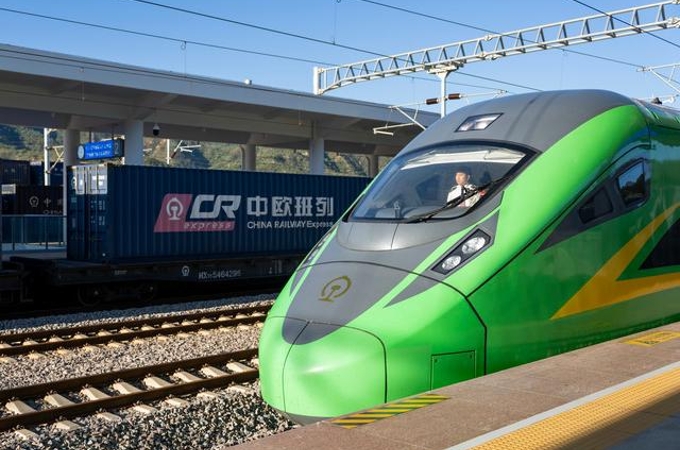Scientists reveal blueprint of China's lunar water-ice probe mission
Source: China Daily | 2023-08-02 | Editor:Ines
Chinese space scientists have revealed in a paper how the country's lunar probe Chang'e-7, supported by a hopping detector, may go about investigating the water-ice in the shadow pit near the south pole of the moon.
China plans to launch the Chang'e-6 to land on the moon in around 2024 to collect samples from the far side of the moon, before sending the Chang'e-7 probe around 2026 to implement resource exploration of the lunar south pole.
Both orbital remote sensing and in-situ detection in the permanent shadow areas of the lunar south pole are projected to be carried out in the process of probing the source, content and distribution of lunar water-ice, according to a review article published in the journal Space: Science & Technology.
The researchers from the National Space Science Center, under the Chinese Academy of Sciences, and the China Lunar Exploration and Space Engineering Center of the China National Space Administration, indicated in the paper that a water molecular analyzer will be installed on a mini-flying probe to obtain water molecules in the frost layer on the moon's surface.
According to their plan, the mini-flying probe will take off in the lunar light area and fly to the permanently-shadowed bottom of an impact cater.
A drilling tool on the probe will then sample lunar soil water-ice before a mechanical arm will move it into a heating furnace for spectral analysis.
The mini-flying detector can overcome the limitations faced by traditional lunar rovers, which are incapable of reaching the crater bottom, and the measurement results will reveal whether the lunar soil at the bottom of the crater contains water, ammonia and other volatile matter, according to the paper.
Also, two other scientific payloads are expected to be deployed on an orbiter to study the moon's surface water-ice, according to the paper.
Lunar water exploitation is believed to be a prerequisite for a sustained human presence on the moon and in deeper space. However, the possible source of lunar water-ice is still unclear, making the mission scientifically necessary.
According to China's lunar exploration blueprint, the Chang'e-8 will be launched around 2028 to conduct experiments on lunar resource utilization and to build the basic model of the International Lunar Research Station.
You May Like
-
China to fully promote 4th stage of lunar exploration progra...
InKunming 2023-02-09 -
China's Chang'e 4 probe completes work for 44th lunar day
switched to dormant mode for the lunar night after working stably for a 44th lunar day. The lander was switched to dormant mode at 6:00
InKunming 2022-07-07 -
Lift off! China's space odyssey | China's lunar exploration
Click to review the Chinese fairy tale of "Chang'e flying to the moon" in the 21st century.
InKunming 2022-04-26 -
China starts engineering development of lunar exploration pr...
China will start engineering development of the fourth phase of its lunar exploration program this year.
InKunming 2022-04-25 -
China releases information of 15 new lunar samples online
China has released the information of the third batch of lunar samples brought back by the country's Chang'e-5 mission.
InKunming 2021-11-16 -
Chinese institutions to receive 2nd batch of lunar samples f...
China has announced a list of research institutions that are to receive the second batch of lunar samples brought back by its Chang'e-5 mission.
InKunming 2021-10-27







